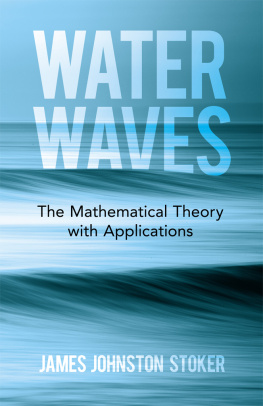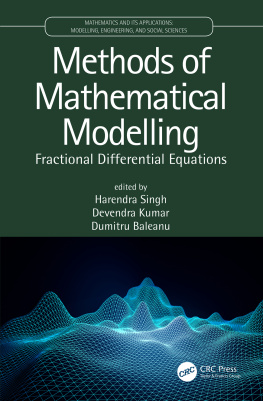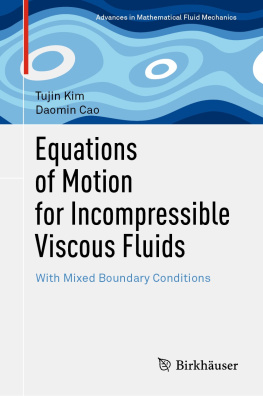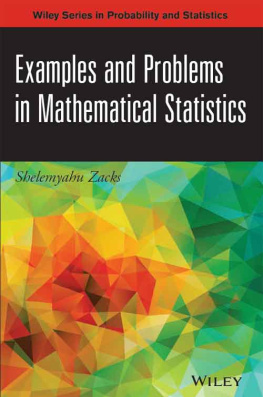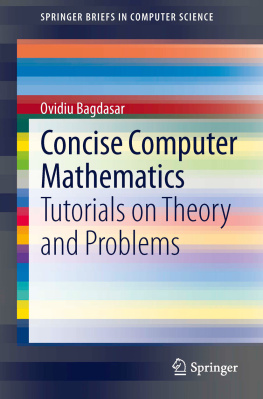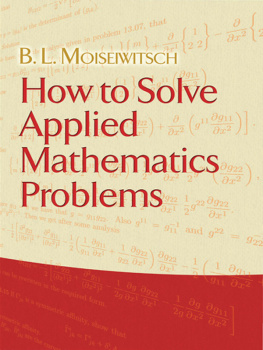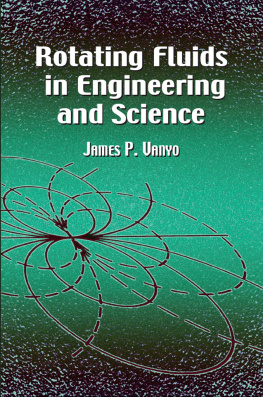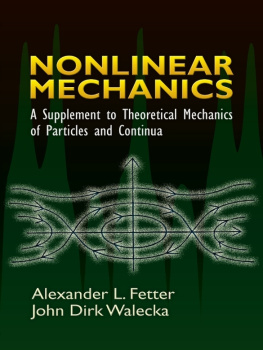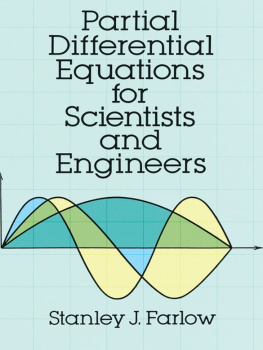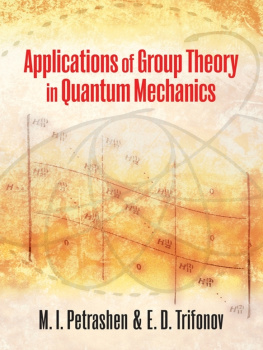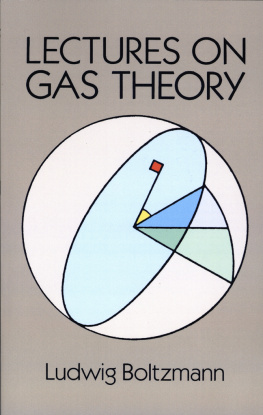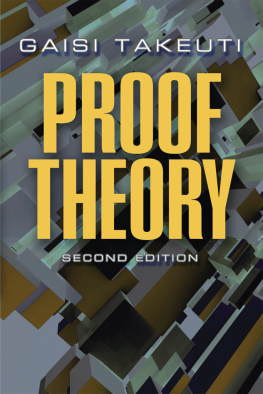
Waves about a harbor
WATER
WAVES
The Mathematical Theory
with Applications
JAMES JOHNSTON STOKER
Dover Publications, Inc.
Mineola, New York
To
NANCY
Bibliographical Note
This Dover edition, first published in 2019, is an unabridged republication of the work originally published in 1957 by Inter science Publishers, Inc., New York, as Volume IV in their Pure and Applied Mathematics series.
Library of Congress Cataloging-in-Publication Data
Names: Stoker, J. J. (James Johnston), 1905-1992 author.
Title: Water waves : the mathematical theory with applications / James Johnston Stoker.
Description: Dover edition. | Mineola, New York : Dover Publications, Inc., 2019. | Originally published: New York : Interscience Publishers, 1957. Republished: New York : Wiley, 1992. | Includes bibliographical references and index.
Identifiers: LCCN 2018047442| ISBN 9780486832999 | ISBN 0486832996
Subjects: LCSH: Water waves, | Hydrodynamics. | Hydraulics.
Classification: LCC QA927 .S8 2019 | DDC 532/.593dc23
LC record available at https://lccn.loc.gov/2018047442
Manufactured in the United States by LSC Communications
83299601 2019
www.doverpublications.com
Introduction
1. Introduction
The purpose of this book is to present a connected account of the mathematical theory of wave motion in liquids with a free surface and subjected to gravitational and other forces, together with applications to a wide variety of concrete physical problems.
Surface wave problems have interested a considerable number of mathematicians beginning apparently with Lagrange, and continuing with Cauchy and Poisson in France.] in 1925.
The literature concerning surface waves in water is very extensive. In addition to a host of memoirs and papers in the scientific journals, there are a number of books which deal with the subject at length. First and foremost, of course, is the book of Lamb [devoted exclusively to the subject. The book by Thorade consists almost entirely of relatively brief reviews of the literature up to 1931 an indication of the extent and volume of the literature on the subject. The book by Sverdrup was written with the special needs of oceanographers in mind. One of the main purposes of the present book is to treat some of the more recent additions to our knowledge in the field of surface wave problems. In fact, a large part of the book deals with problems the solutions of which have been found during and since World War II; this material is not available in the books just now mentioned.
The subject of surface gravity waves has great variety whether regarded from the point of view of the types of physical problems which occur, or from the point of view of the mathematical ideas and methods needed to attack them. The physical problems range from discussion of wave motion over sloping beaches to flood waves in rivers, the motion of ships in a sea-way, free oscillations of enclosed bodies of water such as lakes and harbors, and the propagation of frontal discontinuities in the atmosphere, to mention just a few. The mathematical tools employed comprise just about the whole of the tools developed in the classical linear mathematical physics concerned with partial differential equations, as well as a good part of what has been learned about the nonlinear problems of mathematical physics. Thus potential theory and the theory of the linear wave equation, together with such tools as conformal mapping and complex variable methods in general, the Laplace and Fourier transform techniques, methods employing a Greens function, integral equations, etc. are used. The nonlinear problems are of both elliptic and hyperbolic type.
In spite of the diversity of the material, the book is not a collection of disconnected topics, written for specialists, and lacking unity and coherence. Instead, considerable pains have been taken to supply the fundamental background in hydrodynamics and also in some of the mathematics needed and to plan the book in order that it should be as much as possible a self-contained and readable whole. Though the contents of the book are outlined in detail below, it has some point to indicate briefly here its general plan. There are four main parts of the book:
the basis upon which most of the remainder of the book is built.
inclusive, is based on the approximate theory which results when the amplitude of the wave motions considered is small. The result is a linear theory which from the mathematical point of view is a highly interesting chapter in potential theory. On the physical side the problems treated include the propagation of waves from storms at sea, waves on sloping beaches, diffraction of waves around a breakwater, waves on a running stream, the motion of ships as floating rigid bodies in a seaway. Although this theory was known to Lagrange, it is often referred to as the Cauchy-Poisson theory, perhaps because these two mathematicians were the first to solve interesting problems by using it.
digital computers. That such methods can be used to furnish accurate predictions has been verified for a flood in a 400-mile stretch of the Ohio River, and for a flood coming down the Ohio River and passing through its junction with the Mississippi River.
, is concerned with problems solved in terms of the exact theory, in particular, with the use of the exact nonlinear free surface conditions. A proof of the existence of periodic waves of finite amplitude, following Levi-Civita in a general way, is included.
The amount of mathematical knowledge needed to read the book varies in different parts. For considerable portions of requires much less in the way of specific knowledge, and, as was mentioned above, the basic theory of the hyperbolic differential equations used there is developed in all detail in the hope that this part would thus be made accessible to engineers, for example, who have an interest in the mathematical treatment of problems concerning flows and wave motions in open channels.
In general, the author has made considerable efforts to try to achieve a reasonable balance between the mathematics and the mechanics of the problems treated. Usually a discussion of the physical factors and of the reasons for making simplified assumptions in each new type of concrete problem precedes the precise formulation of the mathematical problems. On the other hand, it is hoped that a clear distinction between physical assumptions and mathematical deductions so often shadowy and vague in the literature concerned with the mechanics of continuous media has always been maintained. Efforts also have been made to present important portions of the book in such a way that they can be read to a large extent independently of the rest of the book; this was done in some cases at the expense of a certain amount of repetition, but it seemed to the author more reasonable to save the time and efforts of the reader than to save paper. Thus the portion of on the motion of ships.
Originally this book had been planned as a brief general introduction to the subject, but in the course of writing it many gaps and inadequacies in the literature were noticed and some of them have , for example); others (like the theory of waves on sloping beaches) have been treated at some length as much because the author had a special fondness for the material as for their intrinsic mathematical interest. Thus the author has written a book which is rather personal in character, and which contains a selection of material chosen, very often, simply because it interested him, and he has allowed his predilections and tastes free rein. In addition, the book has a personal flavor from still another point of view since a quite large proportion of the material presented is based on the work of individual members of the Institute of Mathematical Sciences of New York University, and on theses and reports written by students attending the Institute. No attempt at completeness in citing the literature, even the more recent literature, was made by the author; on the other hand, a glance at the Bibliography (which includes only works actually cited in the book) will indicate that the recent literature has not by any means been neglected.
Next page
